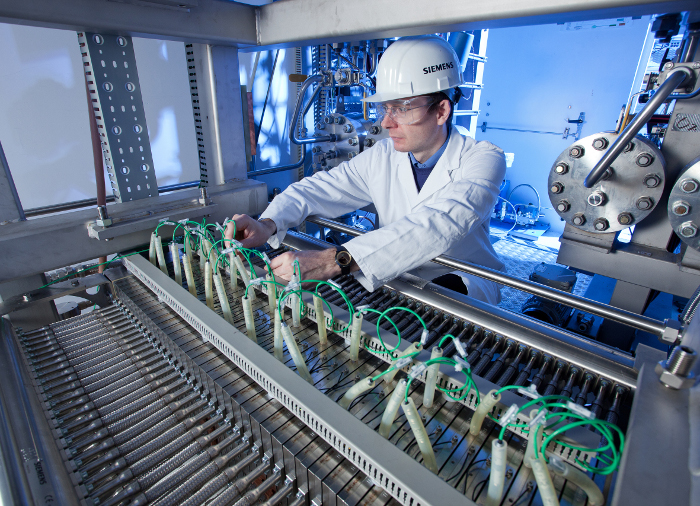Hydrogen cost competitiveness is closer than previously thought and scaling up existing hydrogen technologies will deliver competitive low-carbon solutions across a wide range of applications by 2030, finds a new report published by Hydrogen Council. Yet, to reach this scale, there is a need for investment, policy alignment, and demand creation.
As scale-up of hydrogen production, distribution, as well as of equipment and component manufacturing continues, cost is projected to decrease by up to 50% by 2030 for a wide range of applications, making hydrogen competitive with other low-carbon alternatives and, in some cases, even conventional option, finds the report prepared by global consultancy McKinsey. To deliver on this opportunity, supporting policies will be required in key geographies, including Australia, together with investment support of around US$70 billion.

“Based on real cost data from the industry, the analysis shows that a number of hydrogen solutions can become competitive until 2030 already.” says Bernd Heid, Senior Partner at McKinsey & Company. “Out of 35 use cases analysed, at-scale hydrogen can be the lowest cost low-carbon solution in 22 use cases – such as in the steel industry and heating for existing buildings. And it can beat fossil-based solutions at scale in 9 use cases – for example in heavy-duty transport and trains.”
2030 promise
Strong fall in the cost of producing low carbon and renewable hydrogen is one of the main drivers of this cost trajectory and hydrogen produced via electrolysis is identified as one of the areas where investment until 2030 would make the biggest difference. According to the report, achieving competitive renewable hydrogen from electrolysis will require the deployment of aggregated 70 GW of electrolyzer capacity, with an implied cumulative funding gap with grey production of $US20 billion.
In an earlier analysis, Wood Mackenzie also identified 2030 as the year when green hydrogen, produced primarily by solar electrolysis, would reach cost parity. According to the consultancy, renewables hydrogen could reach parity in Australia, Germany, and Japan by 2030, based on US$30/MWh renewable electricity and 50% utilization hours for electrolyzers.
In production, the cost of low-carbon and/or renewable hydrogen production will fall drastically by up to 60% over the coming decade, the Hydrogen Council report states. This can be attributed to the falling costs of renewable electricity generation, scaling up of electrolyzer manufacturing, and the development of lower-cost carbon storage facilities. Although it identified the same drivers behind falling costs, the International Energy Agency (IEA) was more conservative in its forecast. Its earlier analysis showed that the cost of producing hydrogen from renewable electricity could fall around 30% by 2030.
“2020 marks the beginning of a new era for energy: as the potential for hydrogen to become part of our global energy system becomes a reality, we can expect fewer emissions and improved security and flexibility. This announces the decade of hydrogen,” said Benoît Potier, Chairman and CEO of Air Liquide and Co-chair of the Hydrogen Council. “A clean energy future with hydrogen is closer than we think, because the industry has been working hard on addressing key technology challenges.”
While often touted as the missing link in the energy transition, hydrogen has seen false dawns before. Declaring 2019 a critical year for hydrogen, the IEA said hydrogen was enjoying unprecedented momentum around the world. This was corroborated by the emergence of hydrogen roadmaps and strategies from around the world, which all suggested a large scale and rapid deployment of hydrogen technologies is expected from around 2030 onwards.
In Australia, state and federal energy ministers have given a tick of approval to the National Hydrogen Strategy prepared by chief scientist Alan Finkel and voiced support for a $370 million fund for green hydrogen projects. However, against high expectations of the country’s hydrogen export potential, The Australia Institute’s analysis has suggested that Australia has overhyped the potential demand for hydrogen exports by a factor of up to 11.
This content is protected by copyright and may not be reused. If you want to cooperate with us and would like to reuse some of our content, please contact: editors@pv-magazine.com.




Hydrogen for 5 million cars in California $ 2.00 kg is coming with heppolt wind turbine news 2020
The IEA says that the going price foe electrloysers is $500 per KW. But Chinese manufacturers will sell you one for $200. Either these work or they don’t – I assume the former. Efficiency will be lower, but so what: offpeak interruptible wind or solar electricity is dirt cheap, say 1 cent/kwh looking forward. Hydrogen will grow much faster than the Kinsey scenario.
1c KW/h? Sounds great! Let me know where we can tap into those kind of prices. We’re in the process of a feasibility study to start producing green hydrogen soon. We just need the cheap power.
Cheers, Steve
BDM, Amtronics Engineering, Sydney
0410 545 117